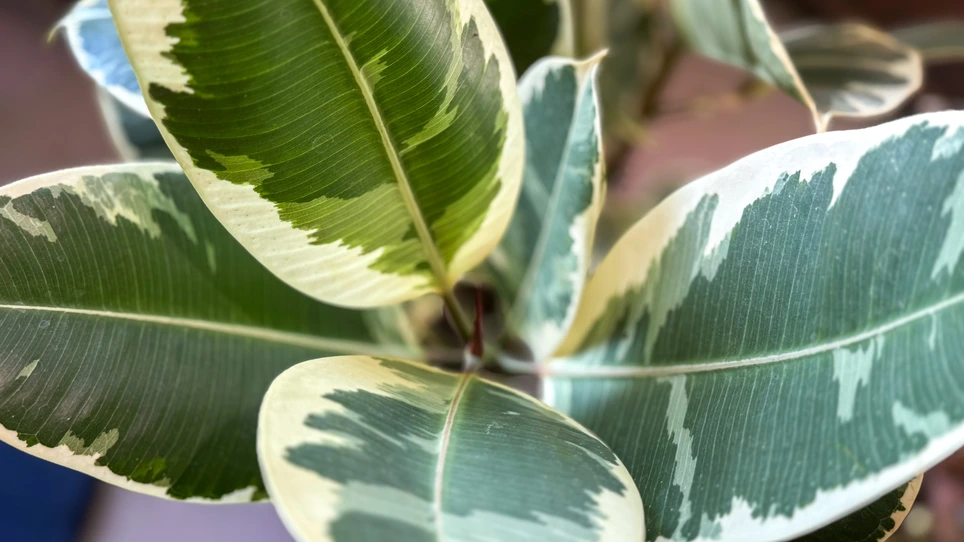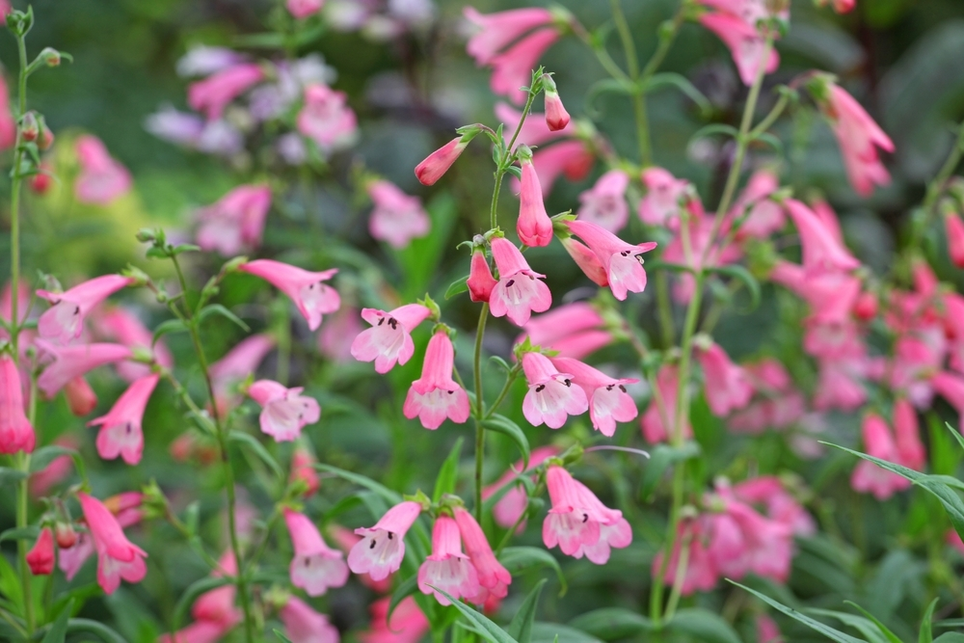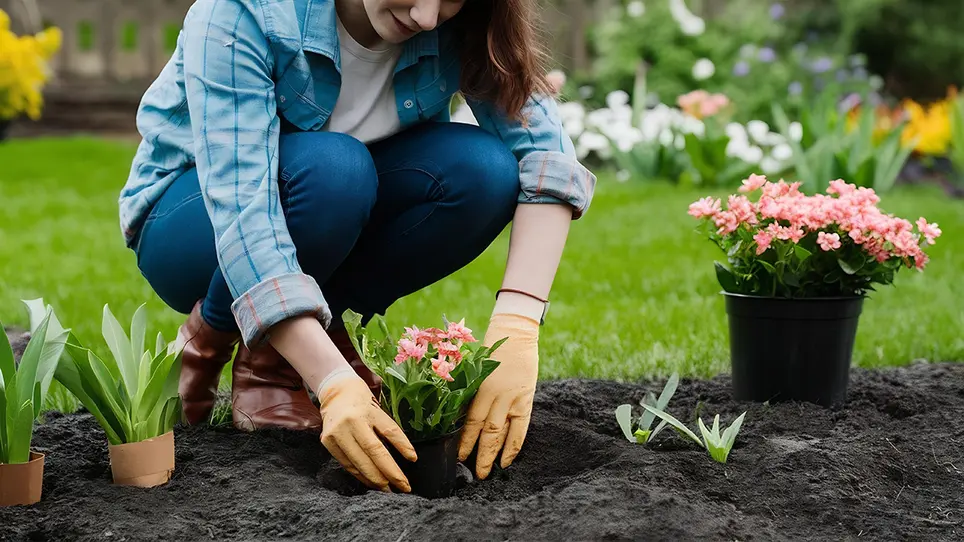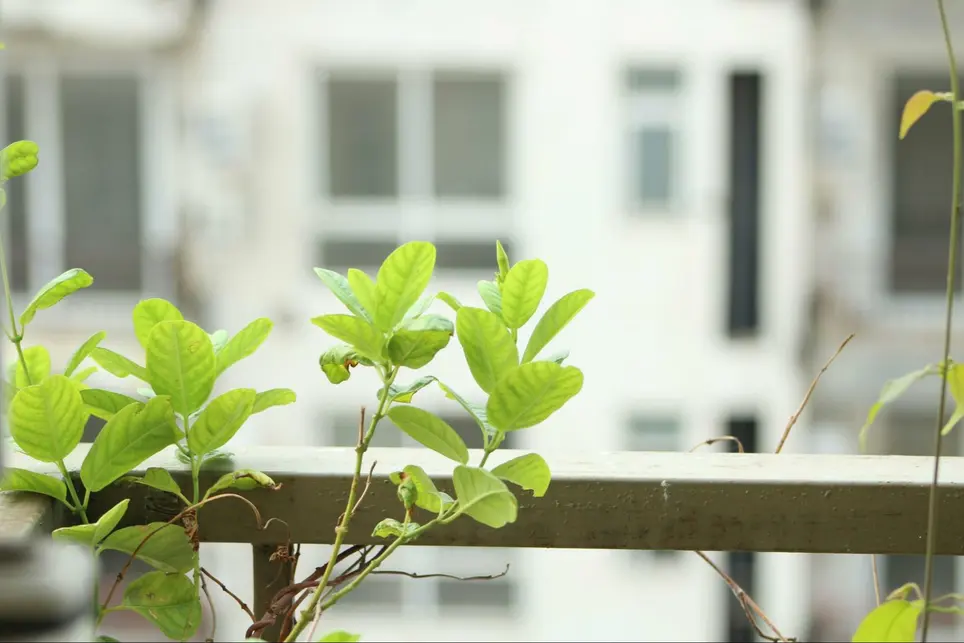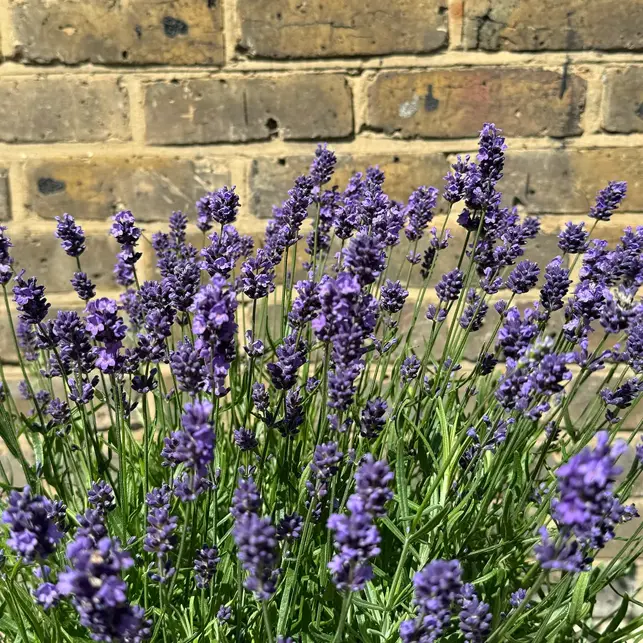
Lavender is everywhere, often diluted from its premium value, for commercial purposes, yet the real plant in its numerous varieties can dramatically transform an outdoor space, if displayed with a little thought.
A particularly versatile plant, especially if you’re living in an urban area, it thrives in containers, window boxes, and garden beds, becoming an irresistible draw for bees and pollinators. Displayed on your patio or near a doorway, a gentle fragrance lingers, permeating the senses with its uplifting energy.
It's a plant that delivers year-round sensory delight and practical benefits, making it an essential choice for gardeners, a common delight among Boma customers’ London landscapes.
Choosing the Best Lavender Varieties
With Lavandula Angustifolia, Hidcote and many more lavender varieties available to keep your garden fragrant, each offer unique qualities suited to specific garden aesthetics. Boma Garden Centre’s Horti team has selected specific varieties that suit every garden style and space.
- Lavender Hidcote: A quintessential English variety, Hidcote is prized for its compact, mounded shape and dense spikes of deep violet-blue flowers. It’s ideal for formal edging along paths, tight borders, or neatly contained pots. Its rich, long-lasting colour contrasts beautifully with paler stonework or terracotta, and it’s a magnet for bees and butterflies from June through late summer.
- Lavender Munstead: Another beloved English classic, Munstead features compact, bushy growth and soft, mid-purple flower spikes with a slightly earlier bloom time than Hidcote. Its gently mounded form makes it a favourite for informal edging and cottage-style plantings. Munstead’s softer colour palette pairs effortlessly with herbs, ornamental grasses, and roses. It's also highly aromatic, perfect for planting near outdoor seating where its calming scent can be enjoyed up close.
- Lavender Angustifolia: Known as "true lavender," this classic variety brings soft pale purple-blue hues or white flowers, and an intense, heady scent that fills the air. Reminiscent of Mediterranean landscapes, its upright, bushy habit works well in raised beds, troughs, or against warm brick walls where its fragrance can linger in the heat. It's also excellent for drying, making it as useful in the kitchen or linen cupboard as it is in the garden.
- Lavender Edelweiss: A refreshing twist on the typical purple palette, Edelweiss dazzles with crisp white blooms and silvery foliage. It works beautifully as a bright accent in shady spots or when paired with darker companion plants for contrast. Perfect in contemporary or minimalist garden schemes, its white blooms shimmer at dusk and lend a cool elegance to summer displays.
- Lavender Anouk and Papillon: These French lavenders stand out with their upright flower spikes crowned by flamboyant bracts—often likened to butterfly wings—adding whimsy and theatrical flair to pots and borders. Their compact size makes them excellent for window boxes, urban patios, or balconies where visual interest is key. Anouk's rich colour range and early blooming habit provide a long season of colour and scent, even before other lavenders are in full swing.
- Lavender Stoechas: Commonly referred to as French lavender, Lavandula stoechas is a compact, ornamental variety adored for its distinctive flowerheads topped with colourful bracts, resembling tiny butterflies or flamboyant hats. Its quirky, upright blooms appear earlier than other types and continue in flushes well into late summer with regular deadheading. Perfect for pots, window boxes, and sunny terraces, it thrives in well-drained soil and adds a splash of Mediterranean personality to even the smallest London balconies. While slightly less hardy than English lavenders, it more than makes up for it in visual flair and pollinator appeal.
- French Lavender in Provence – Lavandin: Despite its name, the lavender famously carpeting the rolling fields of Provence isn't stoechas, but rather Lavandin – a hybrid of Lavandula angustifolia and Lavandula latifolia. Cultivars like 'Grosso' and 'Provence' are grown at scale across southern France, prized for their long stems, large flower heads, and exceptional oil yield. Lavandin’s more camphorous scent is a staple in perfumery and household products, and its silvery foliage and tall, graceful form make it unforgettable in mass plantings. Though less common in UK gardens, it’s the true image many associate with the phrase “French lavender fields.”
The varieties, prominently featured at Boma, provide ample choice for London gardeners looking to personalise their outdoor spaces with fragrance, form, and a flourish of Mediterranean style.
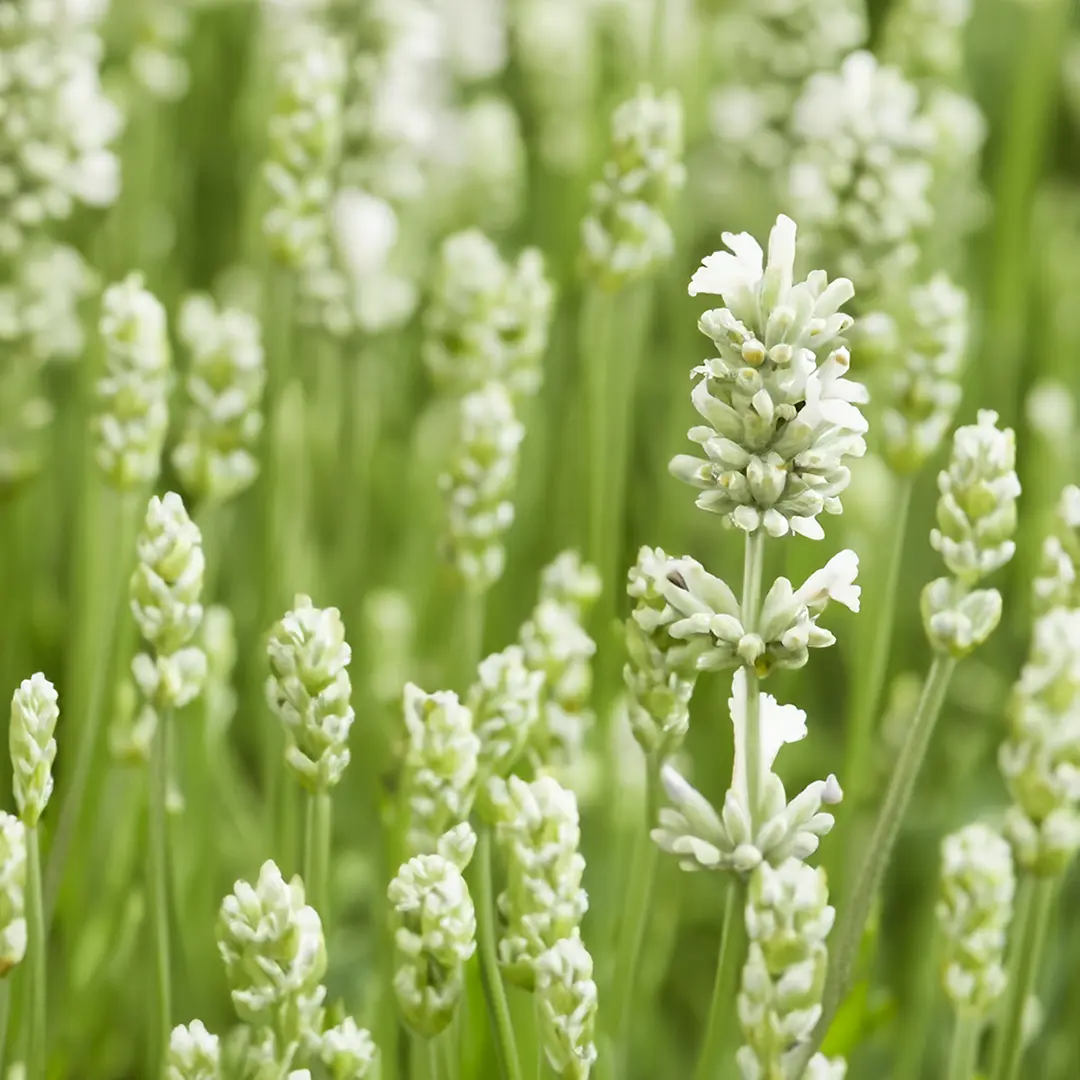
Ideal Growing Conditions For Lavender Plants
Lavender thrives best in full sun, requiring at least 6–8 hours daily. Its Mediterranean roots prefer well-draining, sandy or loamy soils; avoid waterlogged conditions, which can lead to root rot.
Lavender is remarkably low-maintenance:
- Watering: Minimal once established, occasional watering during dry spells.
- Pruning: Essential for longevity; prune after flowering to maintain shape.
- Feeding: Generally unnecessary, but a light spring feed can boost growth.
Seasonal Guide to Lavender
- Spring: Plant lavender as soil warms. Prune lightly to encourage bushy growth.
- Summer: Expect abundant blooms from June through August. Deadhead regularly for continuous flowering.
- Autumn: Trim back spent blooms lightly after flowering to maintain shape.
- Winter: Protect lavender from excessive moisture; mulch sparingly around the base.
Lavender Display Inspiration at Boma
Pots and Planters
Boma offers exquisite Pots and Planters tailored for lavender displays. The whitewash terracotta range or aged terracotta varieties beautifully complement lavender’s rustic aesthetic. Our new Glazed Planters offer exceptional complementary colour and are even better for moisture retention in dry months. Window boxes filled with lavender offer an opportunity for a visual ‘you-can’t-miss-it’ display, with a fragrance that enters the home in the summer, with open windows.
Place Lavender in a Sunny spot, as they adore basking in the summer heat. But ensure ample watering or moisture-retaining compost or moisture gel, especially in terracotta pots and planters, where there’s a tendency to dry out on summer days.
Perfect Plant Pairings
Combine lavender with complementary plants to create visually striking arrangements:
- Rosemary and Thyme: Echo Mediterranean origins with aromatic herbs.
- Ornamental Grasses: Contrast textures and movement with varieties like festuca.
- Geranium and Hedera: Add depth and seasonal interest, ideal for window boxes.
Window Boxes and Troughs
Lavender thrives in Boma’s signature window boxes, creating aromatic and visually pleasing displays. Opt for combinations with Euonymus and Erysimum varieties to achieve elegant, year-round greenery.
Garden Pathways
Strategically placing lavender near seating areas or pathways works well. If you’ve ever been to Provence, France, the Lavender fields en masse are breathtaking. Lavender creates breathtaking vibrance, scenic texture, and transforms gardens with a relaxed grace.
Lavender Plants Benefits & Interesting Lavender Facts
- Culinary delights: Lavender isn't just ornamental; it's a culinary treasure. Its subtle floral notes can transform ordinary dishes into gourmet experiences. Lavender-infused sugar, teas, honey, and even savoury dishes like roasted lamb or potatoes gain a delicate, sophisticated flavour from this herb.
- Medicinal marvel: Historically valued for its antiseptic and anti-inflammatory properties, lavender helps soothe headaches, improve sleep, and reduce stress—ideal for busy London urban lifestyles. Lavender essential oils are widely used in aromatherapy, while dried lavender sachets freshen wardrobes and linens naturally. Originating from the Mediterranean, lavender has been valued since ancient Roman times, primarily for its cleansing and healing properties. Over centuries, it made its way into European gardens, including England, where it has been cherished ever since.
- Bees love lavender, so planting it gives the beleaguered world bee population a much-needed boost. It supports pollinators and benefits the honey industry. In short: planting lavender helps the planet, big time.
- Lavender is naturally pest-deterrent and deer-resistant, making it a low-maintenance hero for your garden. Its aromatic oils repel many common garden nuisances like aphids and whiteflies, while its strong scent tends to discourage deer and rabbits from nibbling. It’s a fragrant forcefield in plant form.
- Lavender cultivated in England: Varieties like ‘Munstead’ and ‘Hidcote’ were specifically cultivated in England, which makes them especially well-suited to our climate. Unlike some Mediterranean types that struggle with damp or cold, these English-bred lavenders are tough enough for London winters and compact enough for urban gardens. ‘Hidcote’ was developed by the famed horticulturist Lawrence Johnston at Hidcote Manor, and ‘Munstead’ was favoured by garden icon Gertrude Jekyll. So when you plant them, you’re not just adding beauty — you’re carrying on a legacy of great British garden design.
- Drying Lavender: Lavender’s popularity in the essential oil industry has soared. But growing your own takes it to another level. Harvesting and drying lavender is a simple, satisfying tradition: snip the stems in full bloom, tie them in bunches, and hang them upside down in a cool, dry place. Later, you can tuck dried sprigs into cloth sachets for drawers and wardrobes — a fragrant reminder of summer days, bringing calm and comfort to even the gloomiest winter mornings
Discover the Best Lavender Varieties at Boma Garden Centre
Experience lavender in all its varieties and find inspiration for your garden at Boma Garden Centre in Kentish Town, London. Explore our exceptional range of lavender plants and unique display containers designed to elevate your outdoor living spaces.
Come and visit us to discover special seasonal offers tailored especially for London’s garden enthusiasts.
Best Lavender Plants Popular Questions
Which is the best lavender to plant in the UK?
Lavender plant varieties such as 'Hidcote' and 'Munstead' are some of the best choices for the UK climate. They feature fragrant flowers, grey green leaves and silver foliage that thrive even through damp British winters.
What is the 8 8 8 rule for lavender?
The 8 8 8 rule for lavender means spacing plants about 8 inches apart, allowing flower stems to grow 8 inches long, and pruning lavender back by 8 inches after flowering. This encourages healthy green foliage, prolongs the life of Portuguese lavender plants and English lavender plants alike, and keeps the shape compact and vigorous.




